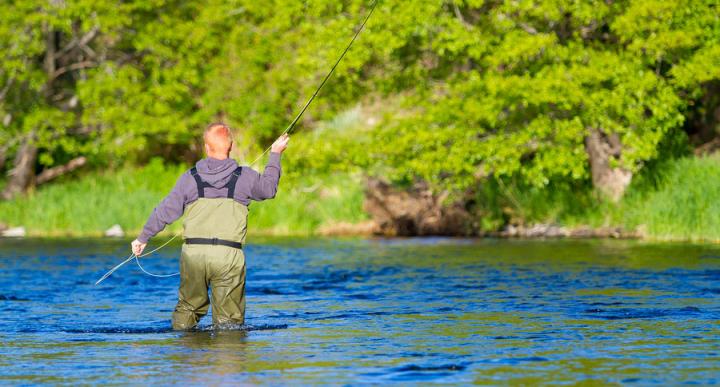Freshwater vs. Saltwater Fly Rods & How They Equate to Each Other

When I first decided to reenter the sport of fly fishing, choosing my first fly rod was actually a very simple matter because I knew that I wanted to fish for Trout on our local, mountain, streams. Thus, because our local streams are small, I chose a 7 ft. 4 wt. for my first graphite fly rod. Of course, my fly rod collection has grown since then to include fly rods of many different lengths, line weights, and actions for different purposes such as fishing big water, fishing for stillwater Trout, fishing for Smallmouth Bass, fishing for Carp, and of course, saltwater fly fishing. However, although I always seem to somehow intuitively know which freshwater fly rod to purchase for any given purpose, the same was not true when it came to choosing saltwater fly rods and, surprisingly, the Web provided little to no help! Thus, I finally decided to do the research myself and, after many, many, hours of digging and pondering, I finally found the answer I had so diligently sought. Thus, in the following article, you will find the results of that research and, at last, a definitive answer to the question of how to equate freshwater fly rods to saltwater fly rods.
However, first you need to be aware that because a fly has a tremendous amount of wind resistance and very little weight, it cannot be cast in the normal manner. Consequently, casting a fly requires that we use a weighted line instead. Therefore, all fly lines are classified according to the weight of the first thirty feet of the line weighed in grains (440 grains = 1 ounce) on a numerical scale that ranges from 1 to 14 with 1 wt. being the lightest and 14 wt. being the heaviest. In addition, the larger the fly is, the heavier the line required to cast it due to its greater wind resistance but, the heavier the fly line is, the greater the disturbance it makes when it land on the surface of the water. Therefore, lighter fly lines provide a more delicate presentation whereas, heavier fly lines deliver a less delicate presentation. On the other hand, heavier fly lines cast father and are less affected by strong winds than lighter fly lines are. Consequently, the reason that there are so many different fly line weights is so that fly anglers can tailor their fly size and presentation to different species of fish in different water conditions.
Now, having said all of that, you also need to be aware that all fly rods are designed to cast a given weight fly line and thus, freshwater fly rods are generally classified as weights 1 through 6 whereas, saltwater fly rods are classified as weights 6 through 14. Also, just like freshwater fly fishermen, saltwater fly fishermen pursue fish species that range from the very small to the extremely large and, they too sometimes face both clear and turbid water conditions. In addition, just like freshwater fly fishermen, saltwater fly fishermen face fish species that range from the extremely skittish to the extremely brave and thus, they too have a need for fly lines that present a wide range of presentations. Furthermore, saltwater fly line weights 11 and 12 are usually reserved for larger game species such as Permit and Tarpon while line weights 13 and 14 are specifically designed for offshore fly fishing.
So, taking all of that into account as well as several other points of additional information, I have come to the conclusion that freshwater line weights 1 through 6 are equal to saltwater line weights 6 through 10 such that a freshwater 1 wt. fly rod equals a 6 wt. saltwater fly rod and a 6 wt. freshwater fly rod equals a 10 wt. saltwater fly rod with freshwater line weights 2 through 5 corresponding to saltwater line weights 7 through 9. Consequently, due to the fact the 5 wt. is by far the most popular freshwater line weight, it makes sense that the 9wt. is by far the most popular saltwater line weight. Also with the 4wt. representing the classic, small stream, fly rod for skittish Trout, it also makes sense that the 8 wt. represents the classic saltwater Bonefish fly rod. Therefore, a Trout fly fisherman armed with a 7 ft. 4wt. and either an 8 1/2 ft. 5wt. or a 9 ft. 5wt. would be well armed for just about any situation he might conceivably encounter whereas, the saltwater fly fisherman would do well armed with a 9 ft. 8wt. and a 9 ft. 9wt. or, perhaps, a 9 ft. 10wt. instead.
However, regardless of which line weight you choose, the main concepts to keep in mind are that the larger the fly is, the heavier the fly line needed to cast it and yet, the heavier the fly line, the less delicate its presentation. So, when choosing either freshwater or saltwater fly rods, the best idea is to choose the lightest fly line you can for the size fly you intend to fish with and then purchase a fly line with a taper that is specifically designed for the type of presentation you require.
Comments